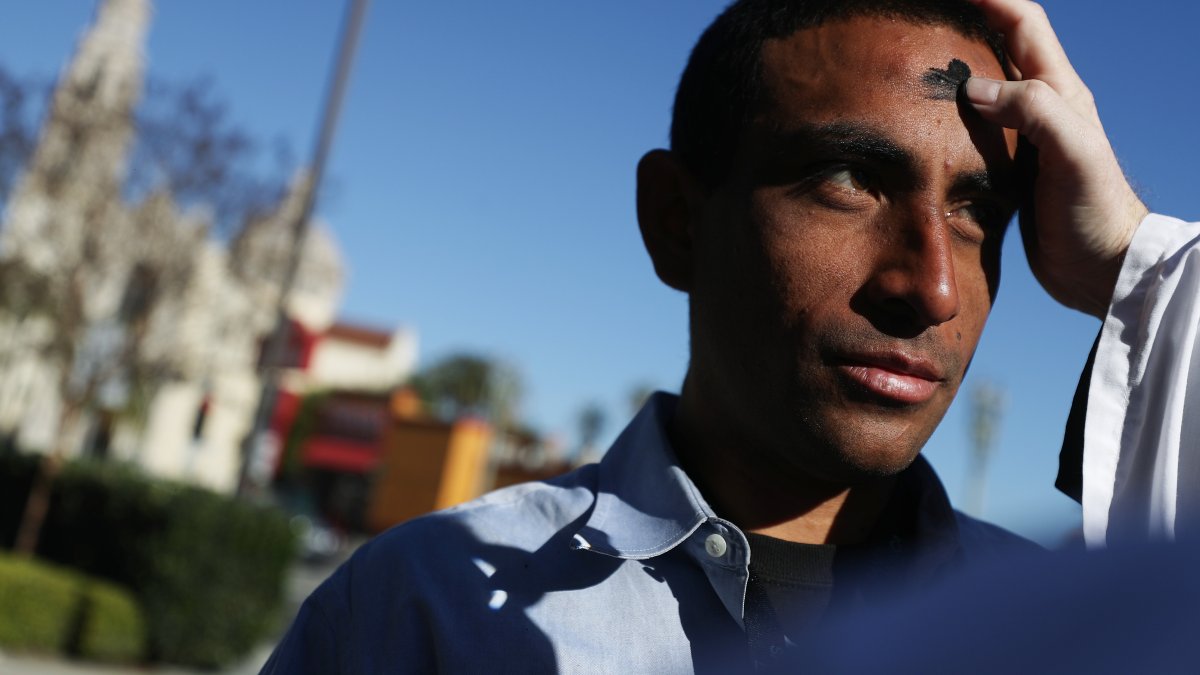Millions of Catholics commemorate Ash Wednesday, the liturgical celebration that marks the start of Lent, the 40 days before (not counting Sundays) the resurrection of Jesus, according to the biblical account.
Here we answer some questions about this day.
What is Ash Wednesday?
In Christian tradition, Ash Wednesday marks the beginning of the holy season of Lent, a time of reflection and repentance in preparation for the celebration of Easter.
Christians of many denominations recognize the holy season during the 40 days leading up to Easter. For centuries, Christians have received the sign of the cross with ashes on the forehead at the start of this season as a reminder of mortal sins and an invitation to receive God’s forgiveness. The tradition originated in the Old Testament where sinners performed acts of public penance.
The use of ashes is to remind parishioners of their mortality. During the Ash Wednesday service, the phrase “Remember, man, dust thou art, and unto dust shalt thou return,” from the book of Genesis, is traditionally used.
Reverend Gregory Wilson, pastor of St. Mary’s Help of Christians Catholic Church in Aiken, South Carolina, offers believers two things to consider when observing Ash Wednesday: prayer and sacrifice.
“Prayer,” Wilson said, “purifies intentions and connects everything to God. Fasting separates people from comfort and from themselves, making them in turn ‘hungry for God,’ for His righteousness and holiness.”
Wilson urges Christians to spend time in prayer, not that “people always have time for what they want to do.”
“We make time for these things because they are a priority and they are necessary in life and guess what? This is prayer. Prayer is like air to the Christian’s lungs. So don’t try to find the time, just do it.”
When is Ash Wednesday 2023?
This year, Ash Wednesday falls on February 22, 2023.
What is Lent?
Lent is the annual period of Christian observance that precedes Easter. The dates of Lent are defined by the date of Easter, which is a movable feast, meaning it falls on a different date each year. Lent begins on Ash Wednesday and its observance lasts for 40 days, excluding Sunday. Lent ends this year on Thursday, April 6.
Catholics began the tradition of Lent around 325, at the Council of Nicaea, but it spread to other Christian denominations, including Western Orthodox, Lutheran, Methodist, Presbyterian, and Anglican churches, among others.
During Lent, Christians give up things like habits or food and drink. The origins of the tradition go back to the 40 days of temptation of Jesus in the desert.
Lent comes from the Middle English word “lens”, which means spring and signals the arrival of spring.
What is Mardi Gras?
On the Tuesday before Ash Wednesday, people tend to eat rich foods in large quantities before fasting, which is a key part of Lent. Hence the name “Fat Tuesday”.
What is the official or Lenten color?
Violet or purple is the official color of Lent. It represents the mourning of the death of Jesus on the cross while celebrating his resurrection in royal colors.
What is the history of Ash Wednesday?
The Catholic News Agency explains that on this day of fasting and abstinence, former Catholics covered their heads with ashes to come before their community in the habit of penance to receive the Sacrament of Reconciliation on Maundy Thursday. , as part of the slogan “dust you are and dust you will be again” (verse Genesis 3:19).
One of the first references to the religious celebration ash day (Ash Day) is found in the Catholic Encyclopedia, which cites extant copies of the Gregorian Sacramentary, which are believed to date from at least the 8th century. The practices of fasting and penance continued until the Council of Nicea, in the year 325, when the preparation for Easter was established in 40 days, which refers to the 40 days that Jesus spent in the desert, the 40 years in the desert of the people of Israel and the 40 days of fasting of Moses at Sinai and Elijah at Horeb.
The Council of Nicaea is the first ecumenical, that is to say universal, council which summoned the bishops of all the Christian regions. It was Emperor Constantine who facilitated the meeting with his protection at Nicaea in Bithynia, near his residence in Nicomedia.
According to Catholicism, the sacramental blessing of the ashes can only be performed by a priest or a deacon, in order to call the faithful to prepare themselves to live the mysteries of the Passion, death and resurrection of Jesus Christ during Holy Week.
According to the Catholic Information Agency, the ashes come from the burning of the remains of the palms blessed on Palm Sunday the previous year, previously sprinkled with holy water and scented with incense.
“To get the right ashes, you can’t just burn them. You have to let them burn without oxygen and that’s where it really becomes carbon black,” Joseph Faulkner, a priest from the Diocese of Lincoln in Nebraska, told the Catholic Information Agency.
The publication states that the bouquets are burned into an extremely fine powder. Some churches mix it with holy water or chrism oil to create a paste.

